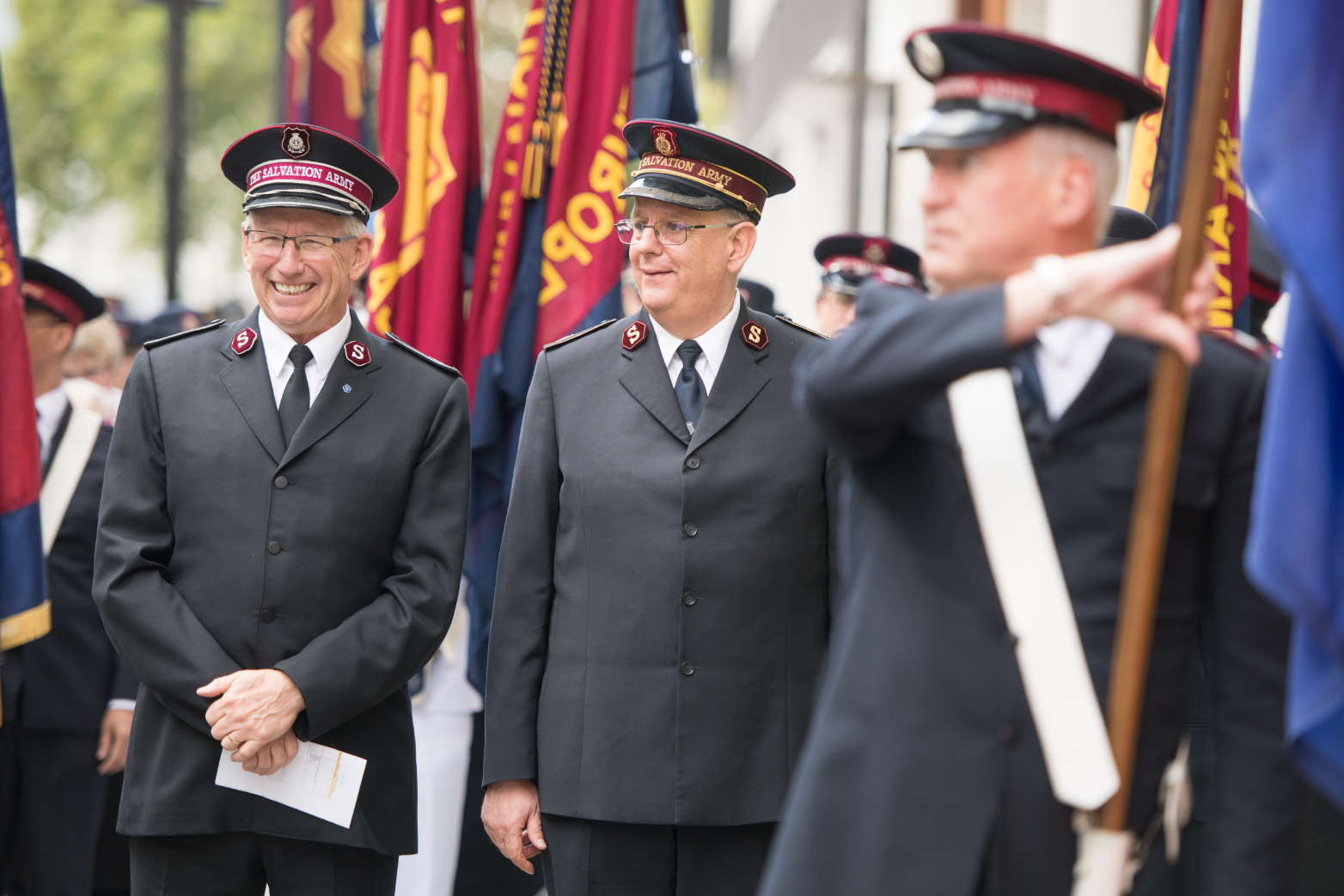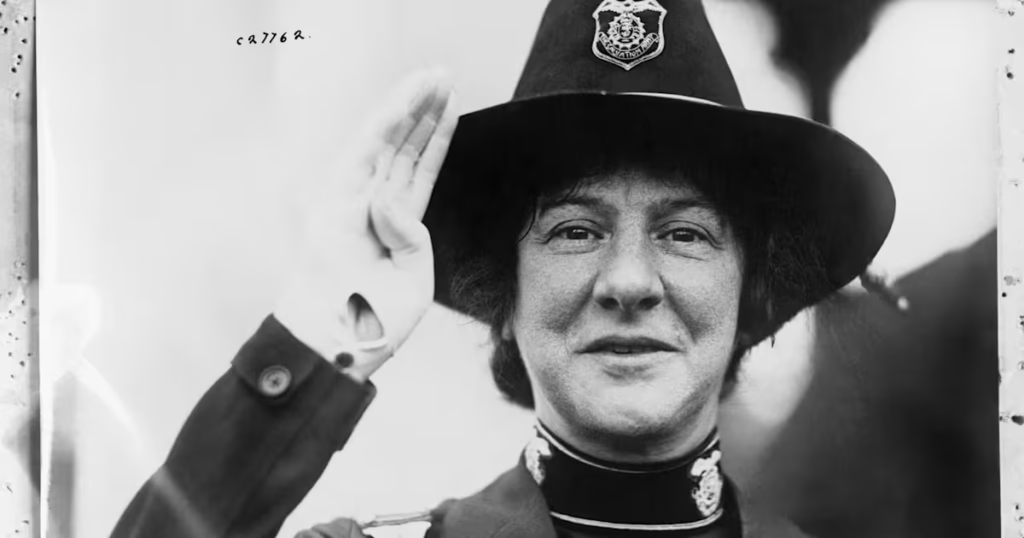“Marching for the Poor: How the Salvation Army Militarized Charity”

In the bustling heart of Victorian London, where poverty clashed with opulence and industrialism widened the gap between rich and poor, a new movement emerged—unlike any charity the world had seen. The Salvation Army, founded in 1865, was not merely a philanthropic organization; it was a disciplined, uniformed army on a mission to save souls and feed the hungry. With military ranks, uniforms, marching bands, and an unshakeable sense of divine duty, the Salvation Army revolutionized charity by combining religion, military structure, and social service.
This article delves into how and why the Salvation Army adopted a military model, how it influenced the global landscape of charitable work, and how it continues to operate today as both a faith-based movement and humanitarian powerhouse.
The Origins: Evangelism in the Slums
The story begins with William Booth, a former Methodist minister, who, in 1865, began preaching to the poor in London’s East End. The destitution he witnessed—homelessness, alcoholism, prostitution, hunger—moved him deeply. Booth believed that spiritual salvation could not be preached to empty stomachs. His mission was to deliver both the gospel and practical help.
He founded an organization originally called the Christian Mission, focused on converting sinners, especially the neglected poor. But the Mission needed a new identity—one that could rally support and give its workers a sense of unity and purpose.
Why a Military Model?
In 1878, Booth’s organization was renamed The Salvation Army, and its transformation into a quasi-military force began.
Here’s why the military structure was adopted:
- Discipline and Order: The military model brought rigor, discipline, and efficiency to the charitable work. Volunteers were organized, punctual, and mission-driven.
- Spiritual Warfare: Booth and his followers believed they were in a war against sin and suffering. The military metaphor emphasized their combat against poverty, vice, and spiritual decay.
- Unity and Identity: Uniforms, ranks, and hierarchy helped create a sense of belonging and a recognizable identity, setting them apart from other religious or charitable groups.
- Public Visibility: Marching bands and public displays of order and pageantry drew attention in crowded city streets, increasing both awareness and recruitment.
William Booth took the title of General, and his followers were called officers and soldiers. Instead of guns, they wielded Bibles, soup ladles, and musical instruments.
Structure and Strategy: A True Army of the Lord
The Army was structured with a chain of command, recruitment practices, and training akin to military institutions:
- Officers were trained in Salvation Army colleges and given specific corps assignments, often in impoverished areas.
- Soldiers were regular members who pledged allegiance to the Army’s mission and abstained from alcohol, drugs, and gambling.
- Each unit operated a corps, similar to a local church, but also ran soup kitchens, shelters, and rescue homes.
- Music played a major role. Brass bands were used not just for worship but also to attract crowds and spread the message on street corners.
The motto was: “Soup, Soap, and Salvation.”

Controversy and Resistance
The Salvation Army’s militarized charity was not universally embraced. In its early years, it faced violent opposition:
- Publicans and brothel owners saw the Army’s anti-alcohol and anti-vice stance as a threat to their businesses.
- A group called the Skeleton Army was formed to disrupt Salvationist meetings, sometimes violently.
- Critics mocked their uniforms and marching style, calling it theatrical or fanatical.
Despite this, the Army grew rapidly—first across Britain, then globally. By the end of the 19th century, the Salvation Army had expanded into America, Australia, India, South Africa, and Canada.
Global Expansion and Social Impact
The Salvation Army’s military-style system allowed it to scale efficiently. By the early 20th century, it had become one of the world’s most recognizable charitable organizations, offering:
- Disaster relief
- Addiction rehabilitation
- Orphanages and homes for unwed mothers
- Job training and vocational programs
- Food distribution and housing shelters
The Army often went where other charities wouldn’t—into slums, prisons, and red-light districts. Their strict internal discipline meant they could deploy rapidly in crises and maintain high levels of accountability.
The Military Model Today
Although some of the overt militarism has softened, the structure remains:
- Officers still wear uniforms and receive ranks.
- The movement is headed by a General elected by the High Council.
- The Army operates in over 130 countries, with more than 1.7 million members and tens of thousands of social service programs.
Its work has expanded to include anti-human trafficking, HIV/AIDS education, refugee aid, and disaster response.
Criticism and Controversy
Like many religious charities, the Salvation Army has faced criticism over the years:
- Accusations of anti-LGBTQ+ policies and controversies over requiring religious adherence for some services.
- Questions around proselytizing in humanitarian work.
- Debates over the balance between faith and social responsibility.
In response, the Army has tried to modernize, stating its commitment to serving all people without discrimination, though debates continue.
Conclusion: A Marching Force of Compassion
The Salvation Army remains a unique phenomenon in the world of philanthropy—a religious army without weapons, bringing spiritual and physical aid through a structure forged in the image of military discipline. Its ability to blend evangelism, humanitarianism, and organizational rigor helped it endure for over 150 years, even as it adapted to new social challenges and global crises.
In an age when many charities seek innovation through tech or branding, the Salvation Army stands as a reminder that sometimes the oldest structures—when driven by purpose—can be the most enduring.




